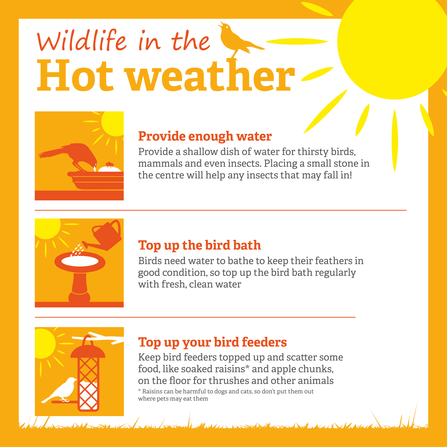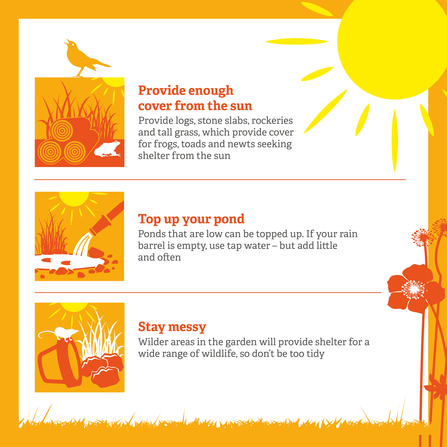The Berkshire, Buckinghamshire & Oxfordshire Wildlife Trust (BBOWT) is urging people to help wildlife survive during the hot weather if they can.
Just as people in the UK are not used to the record-breaking temperatures forecast this week, our native animals, plants and fungi are not adapted to cope with such extreme heat.
Taking a few small steps can save wild lives in the short term, and help to buffer our ecosystem against disruption and environmental change in the long term.


